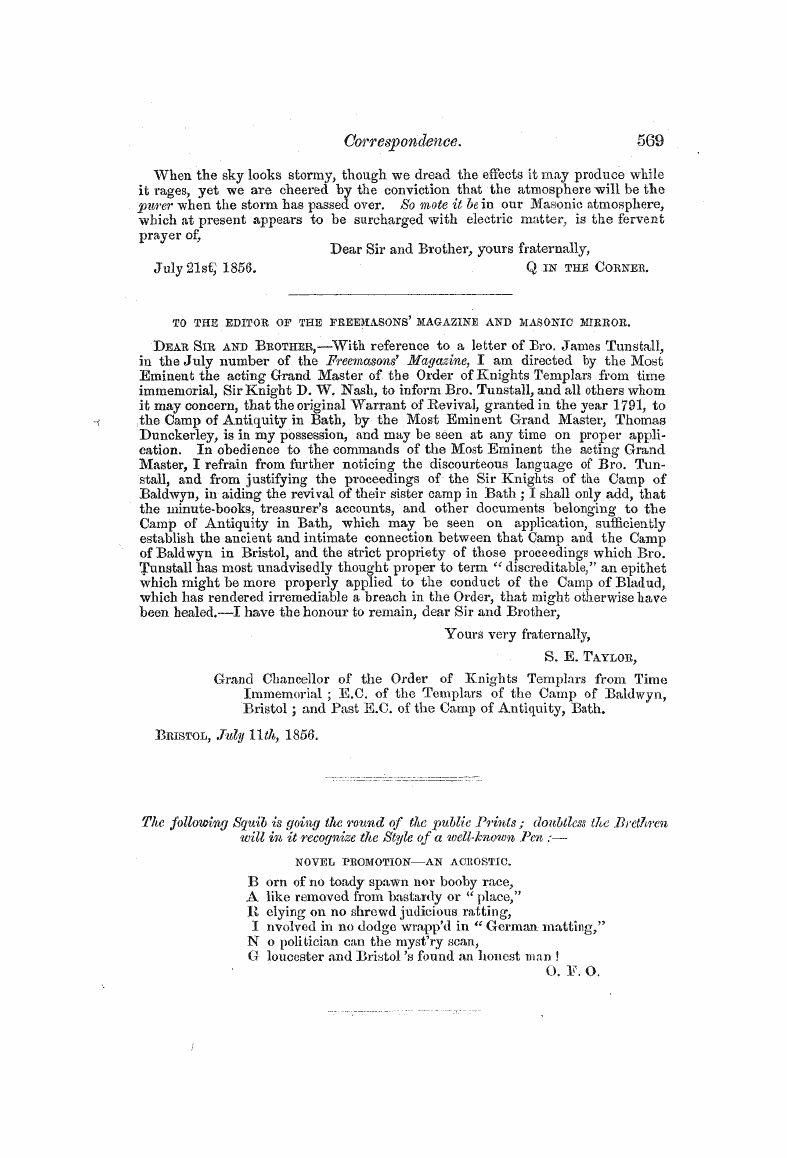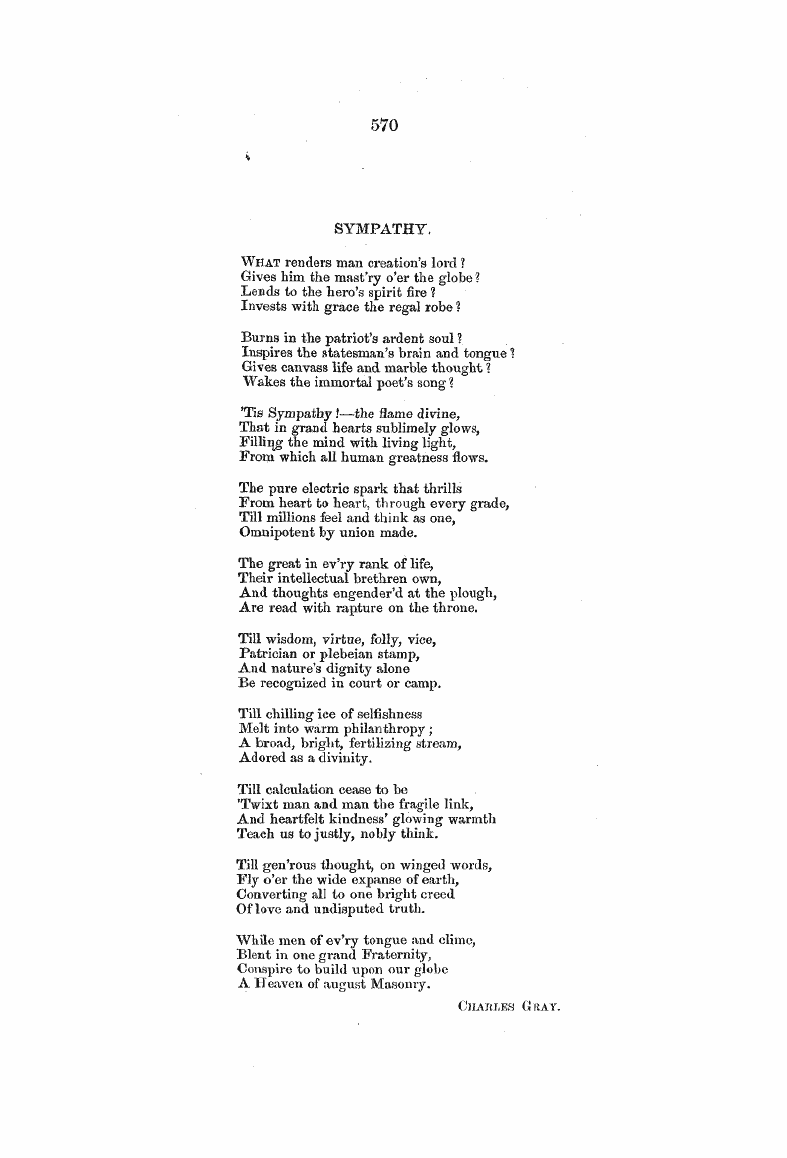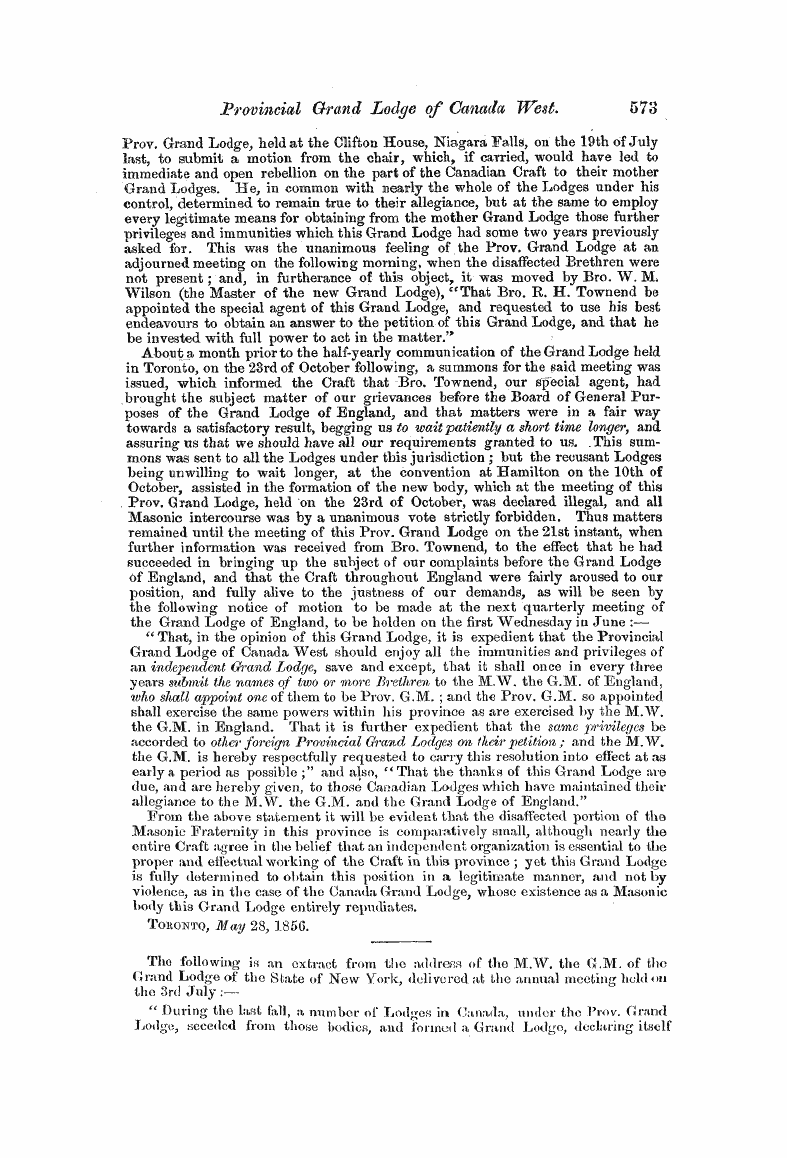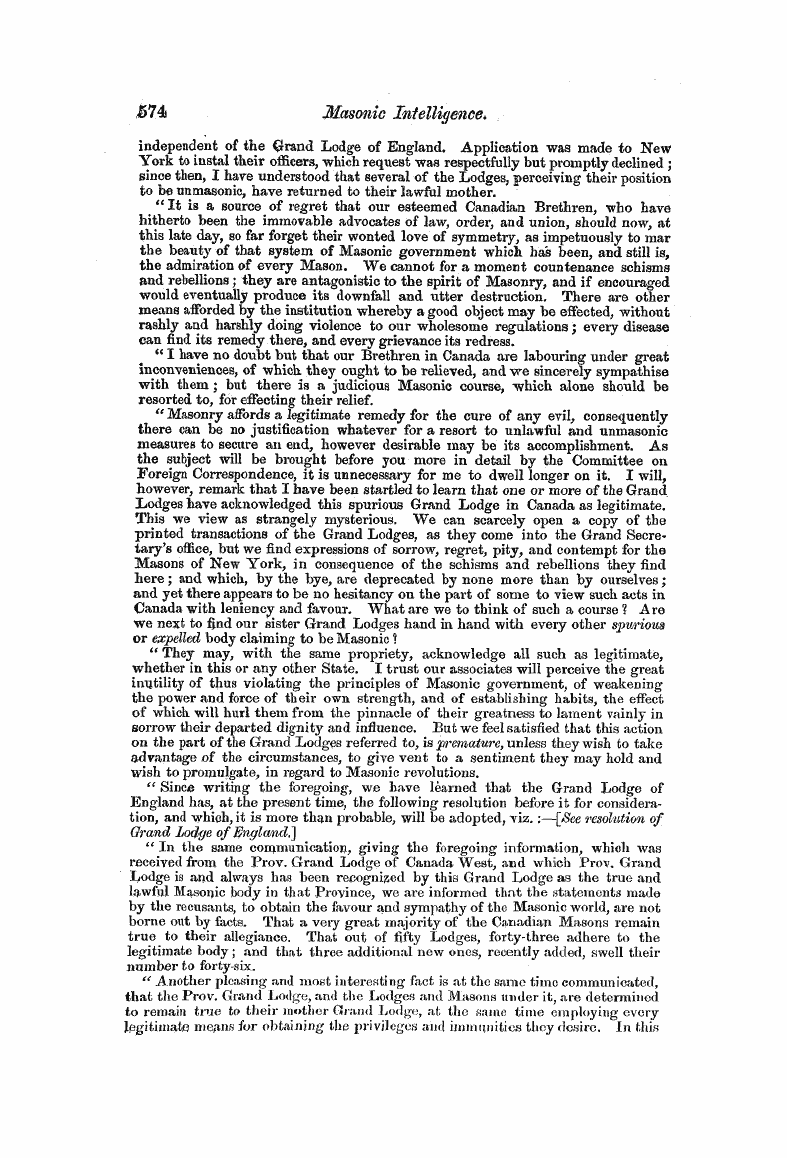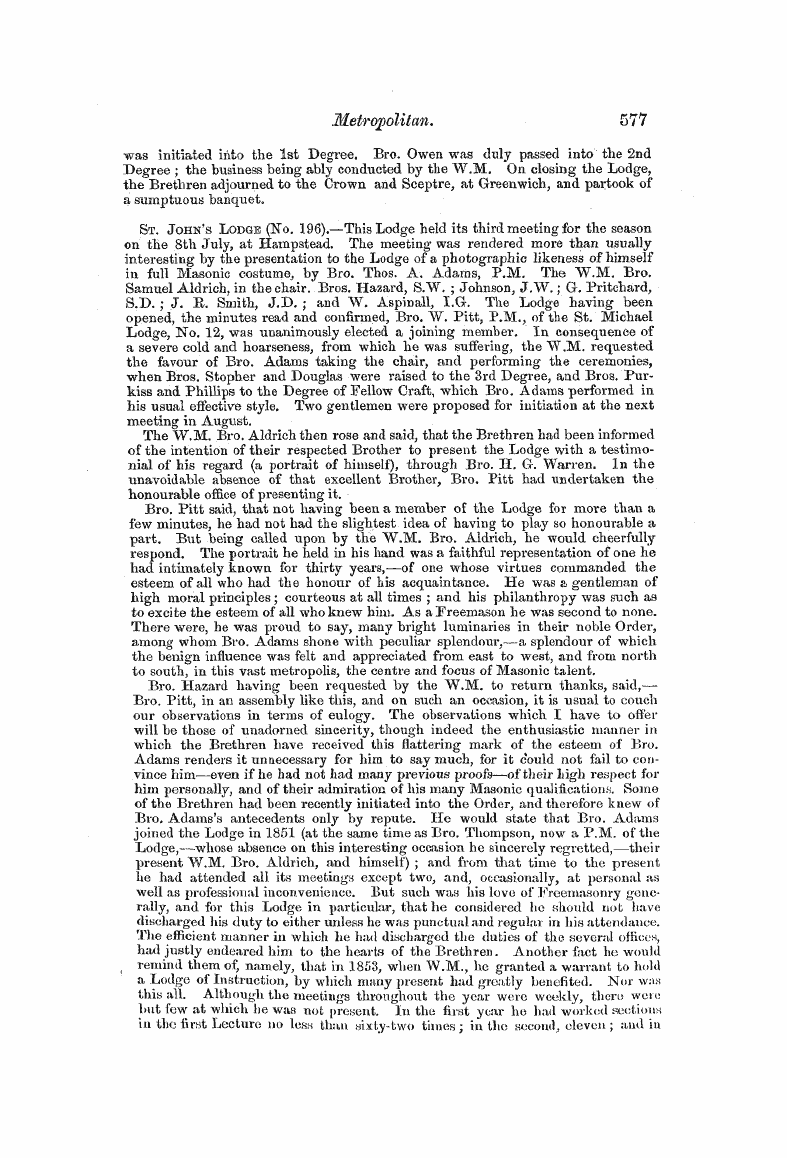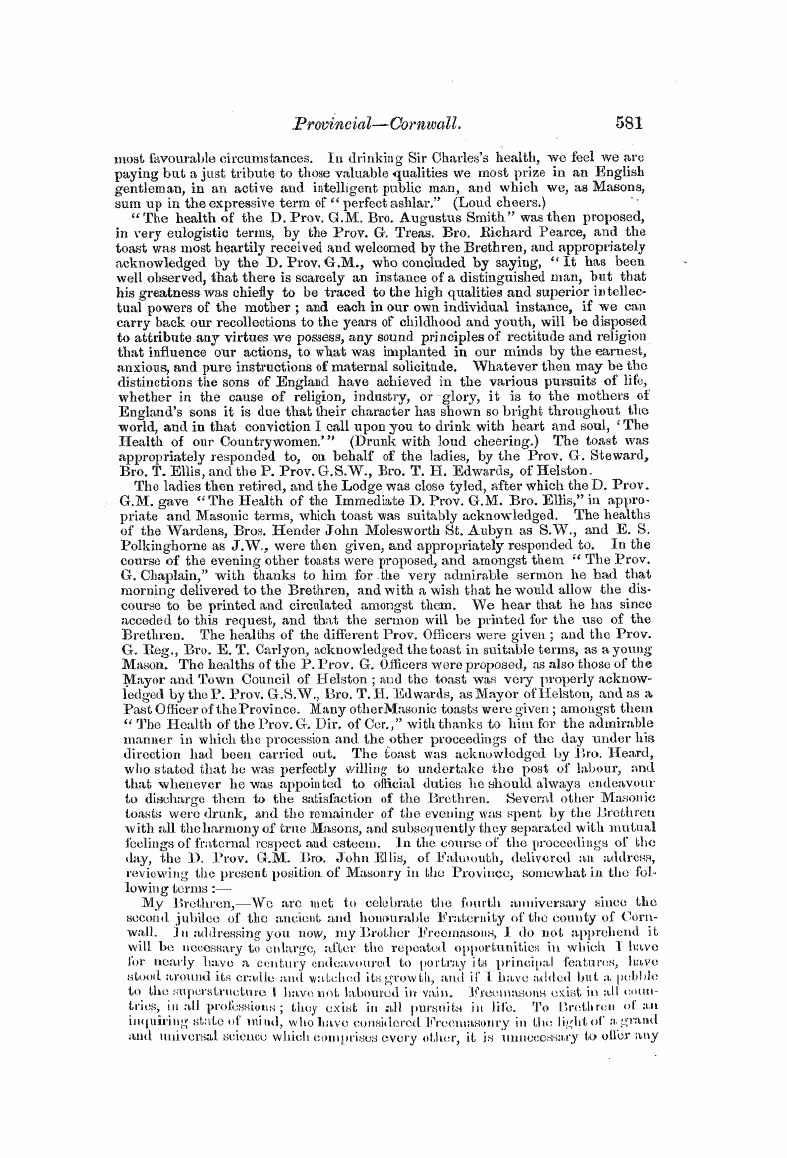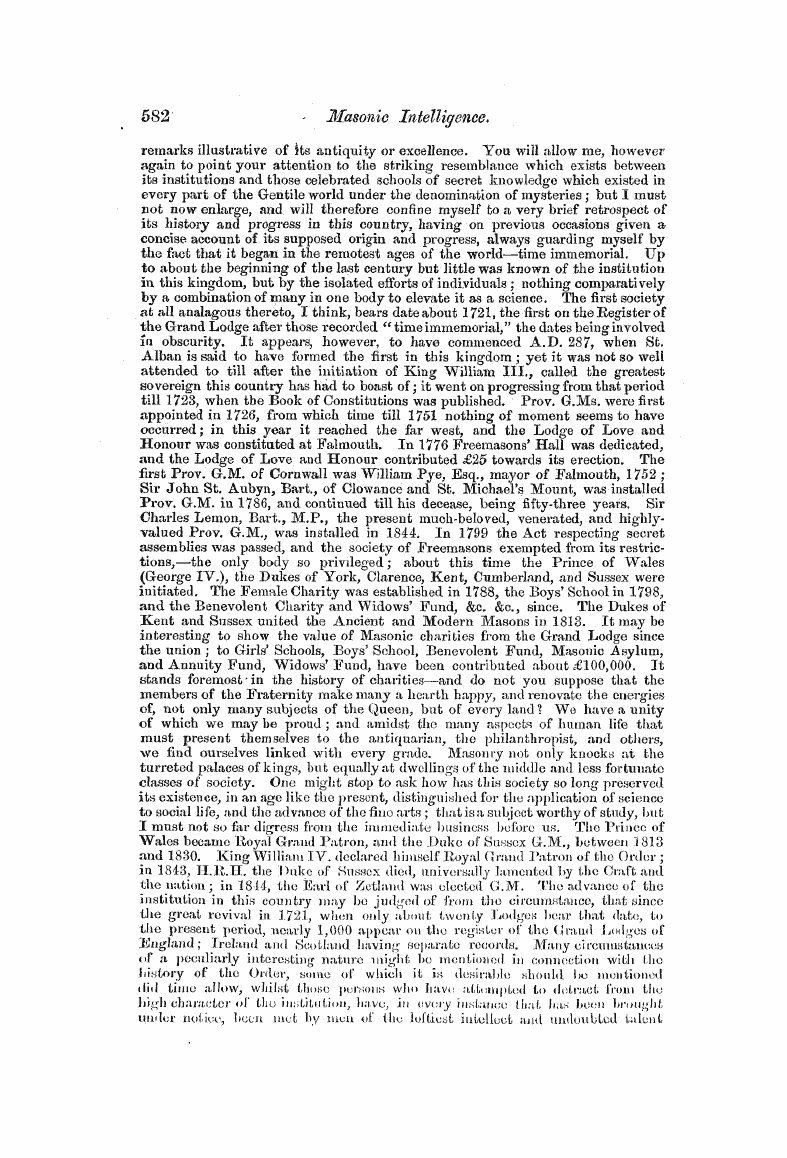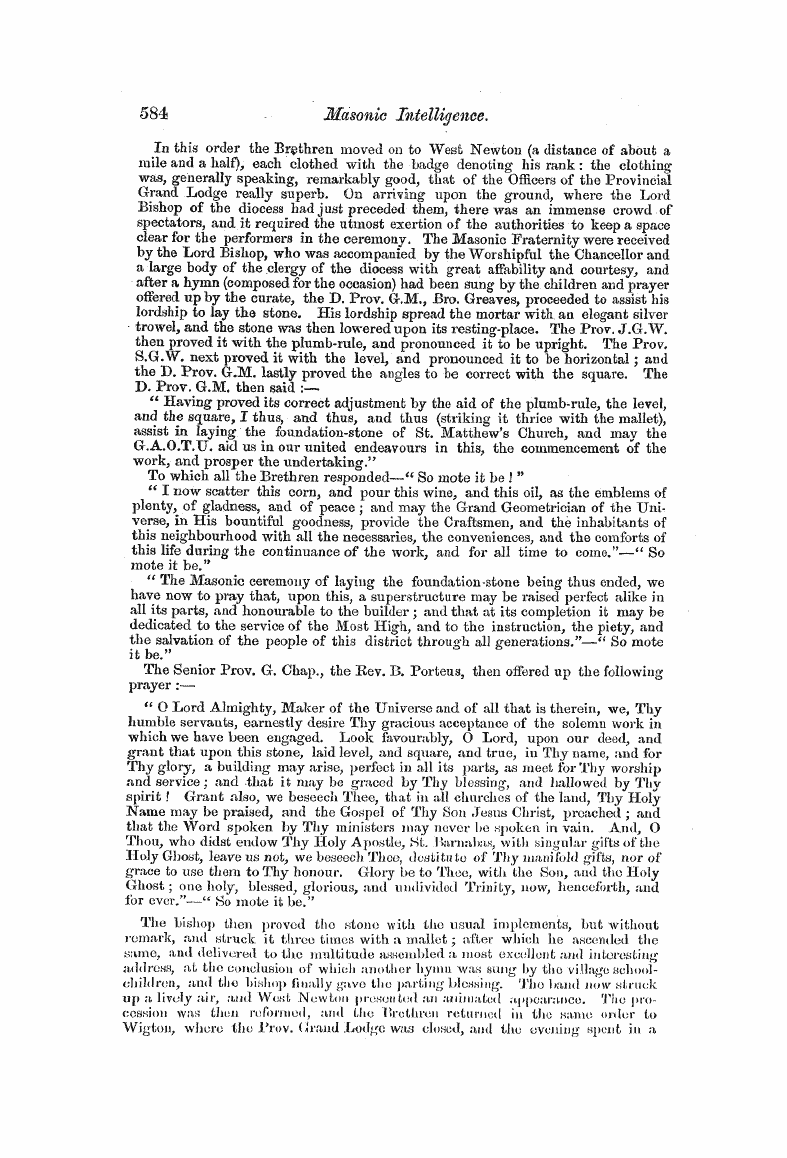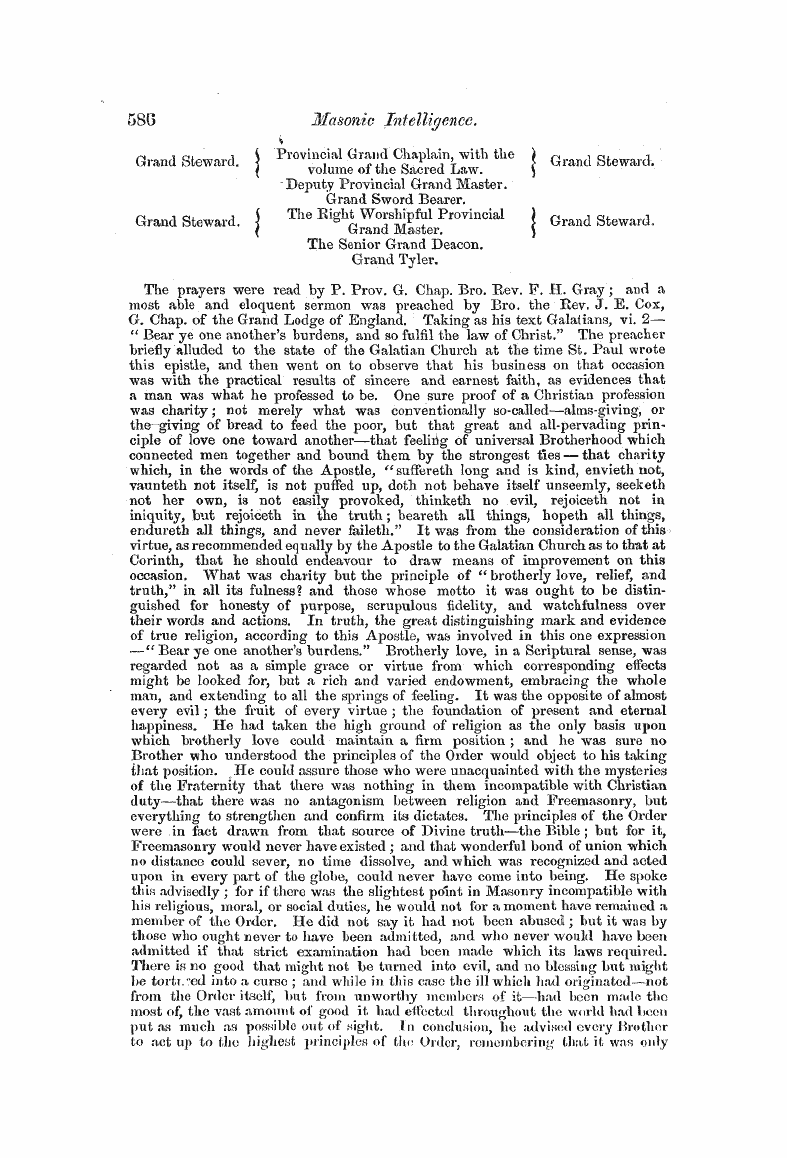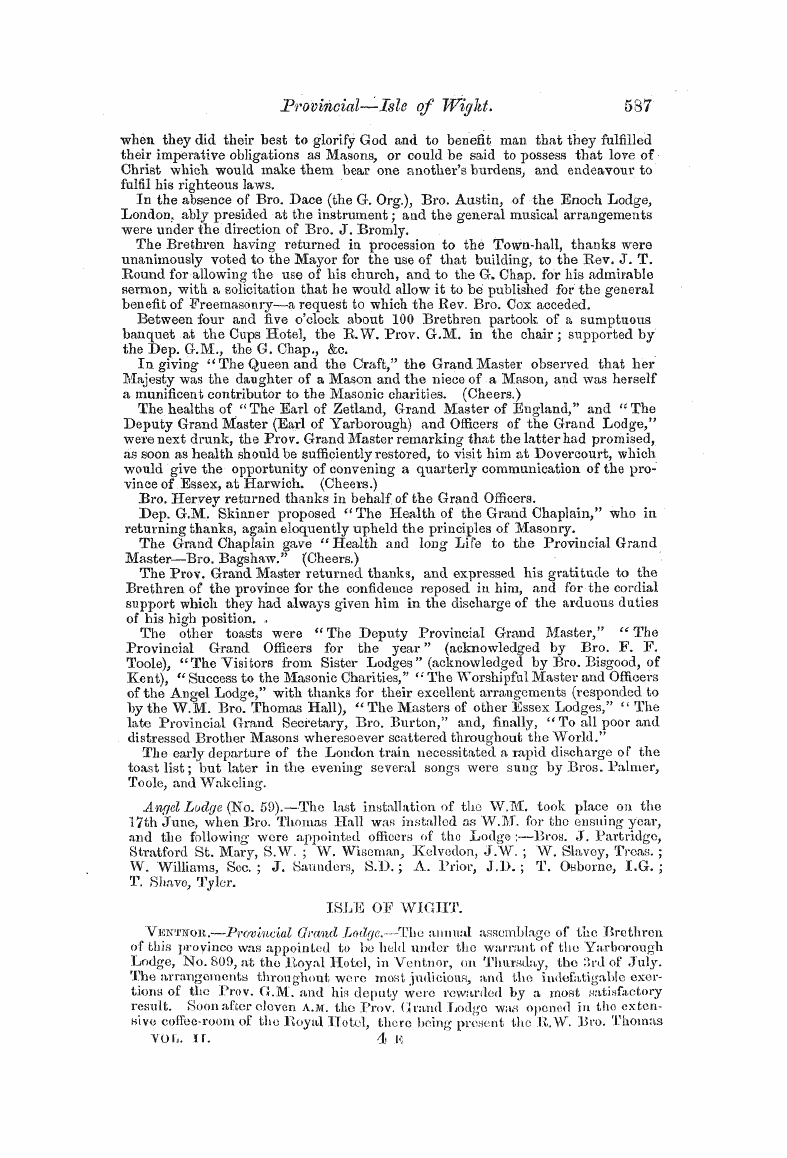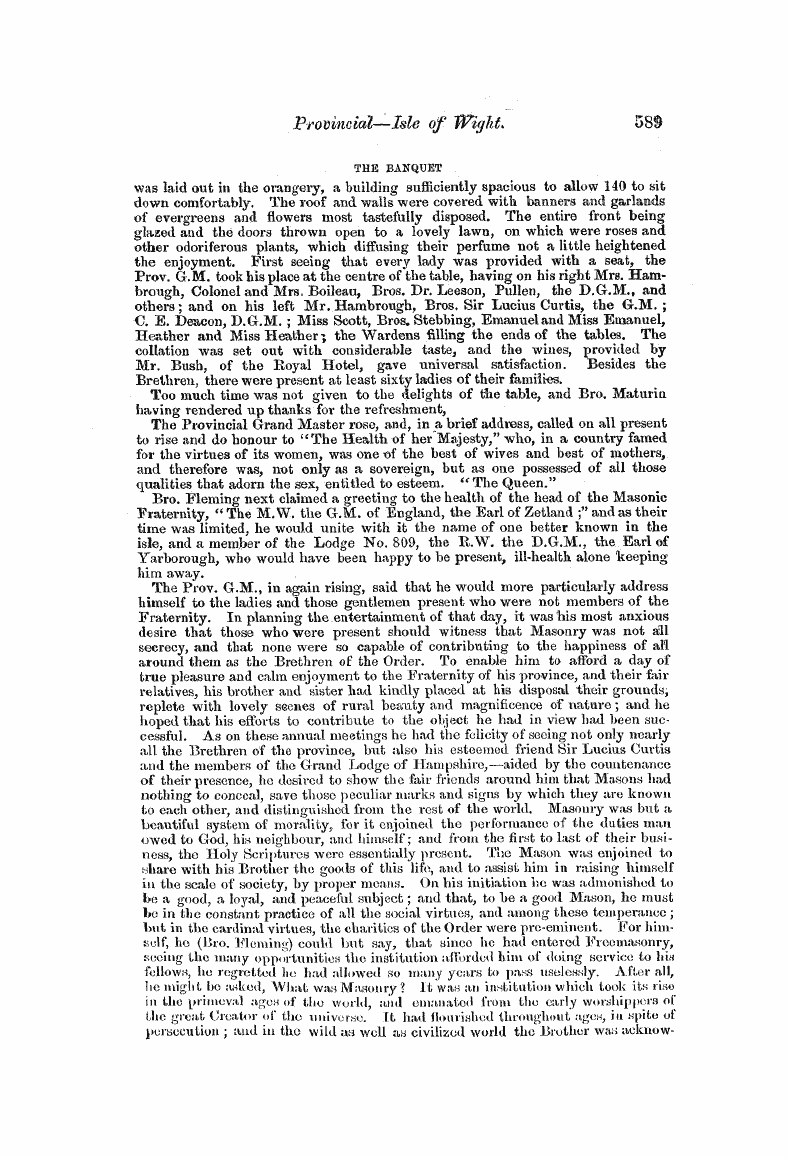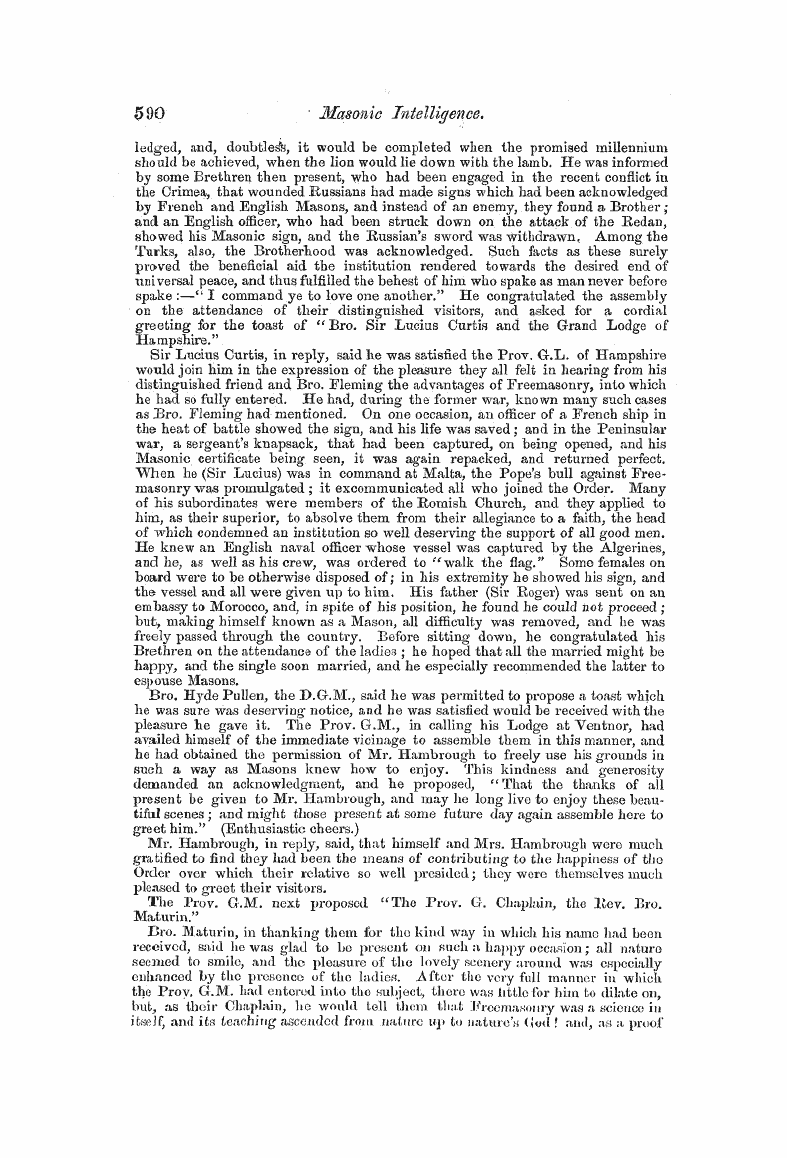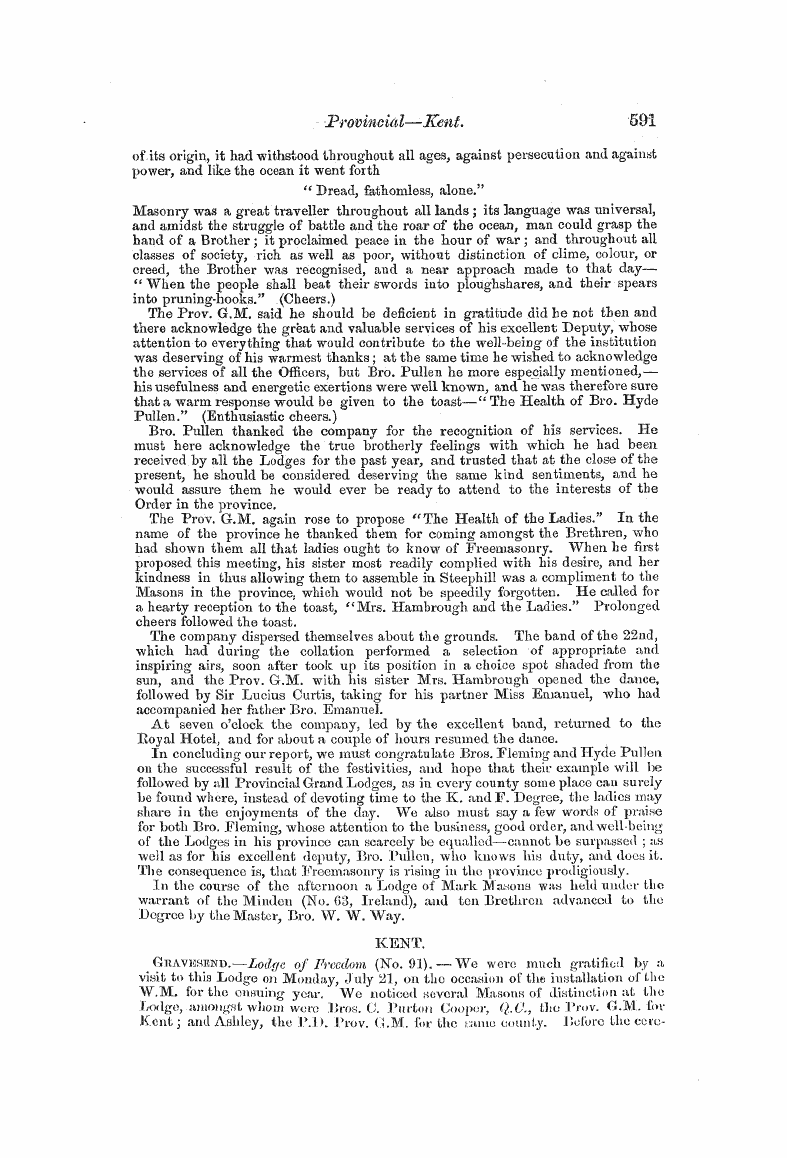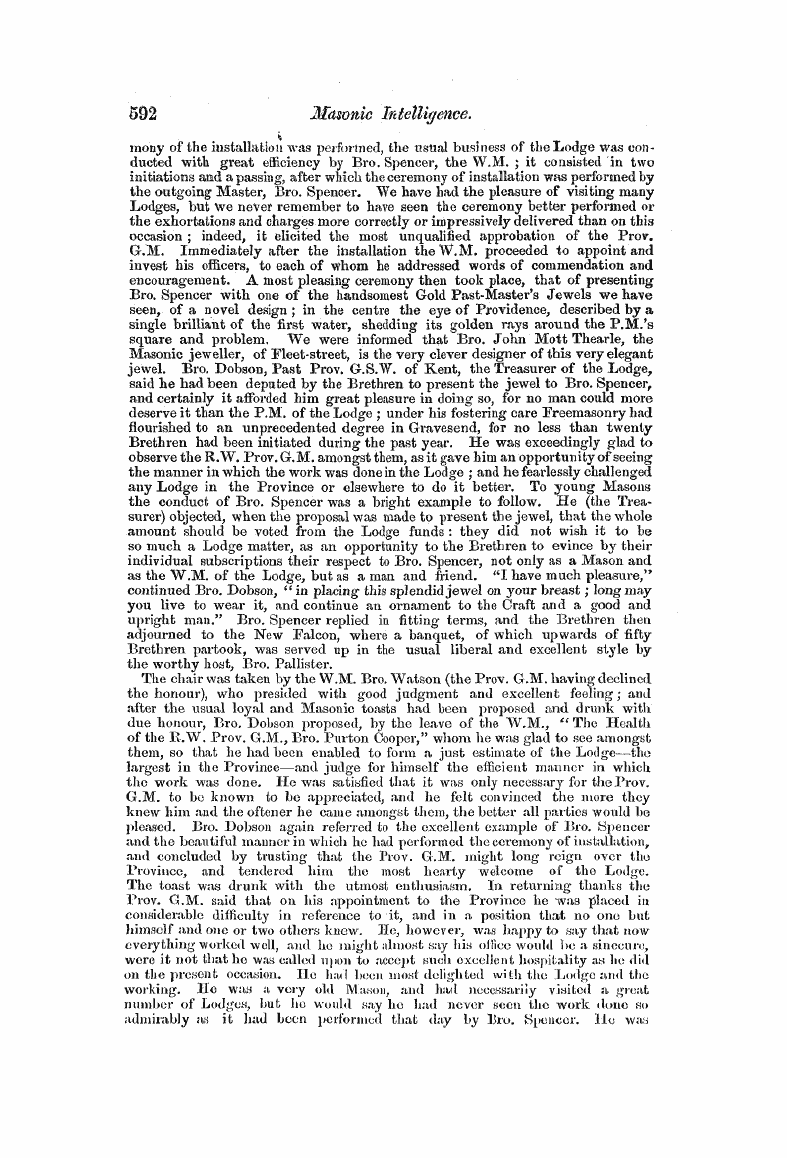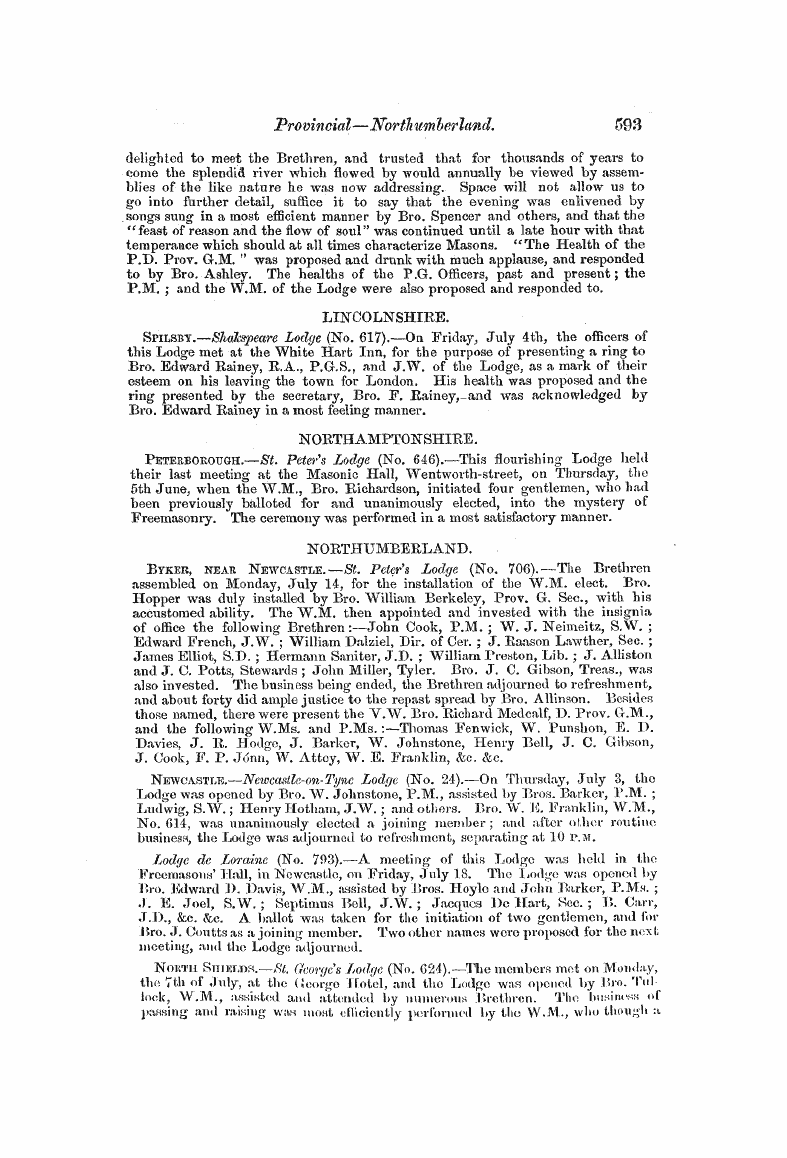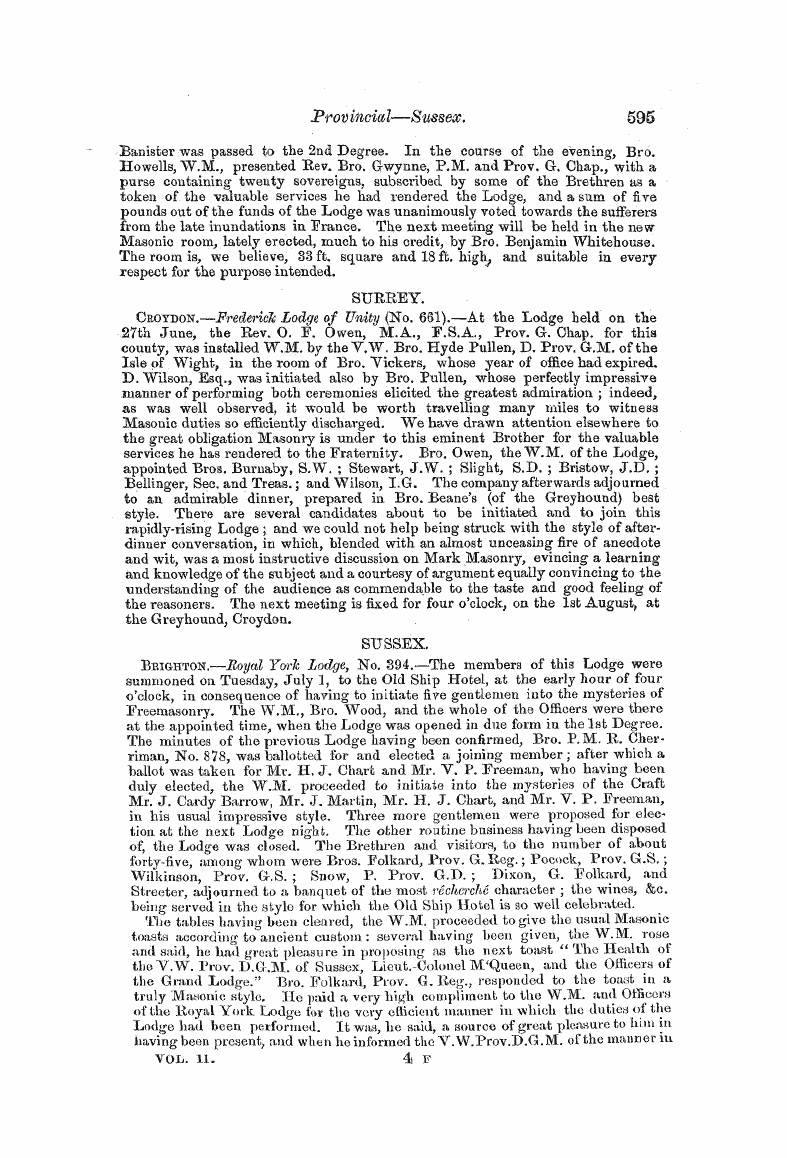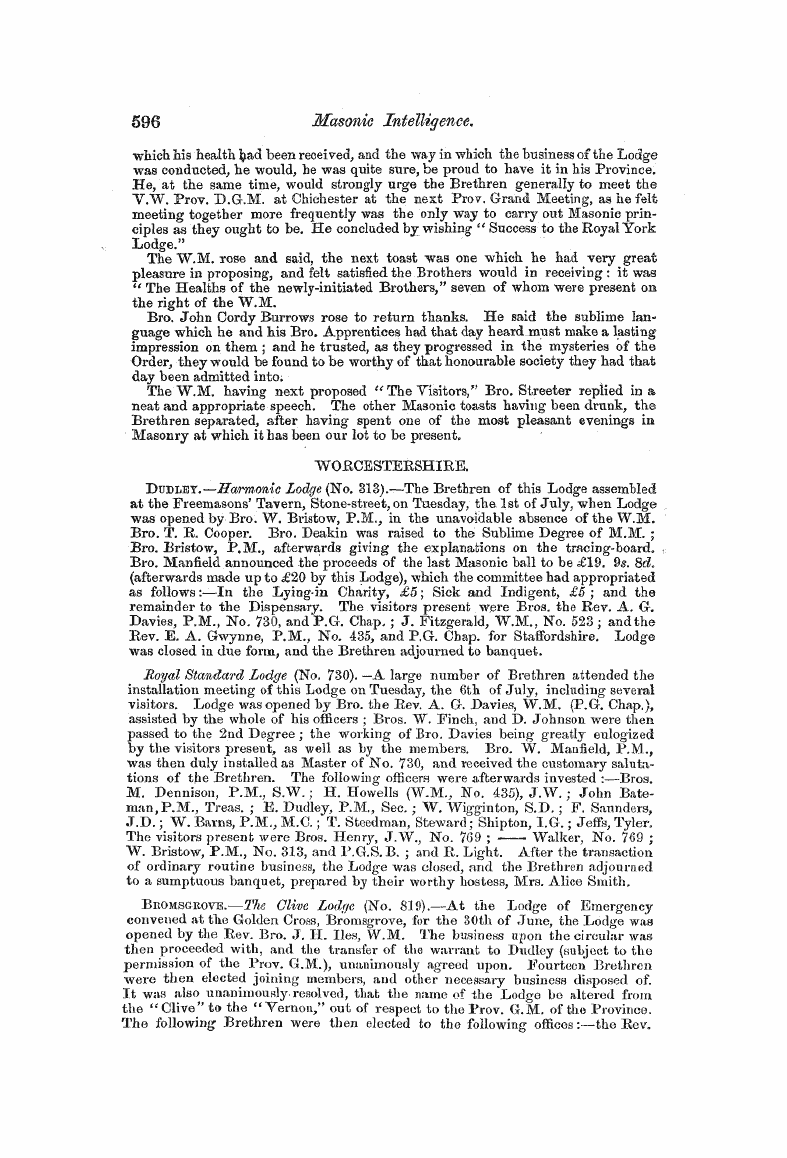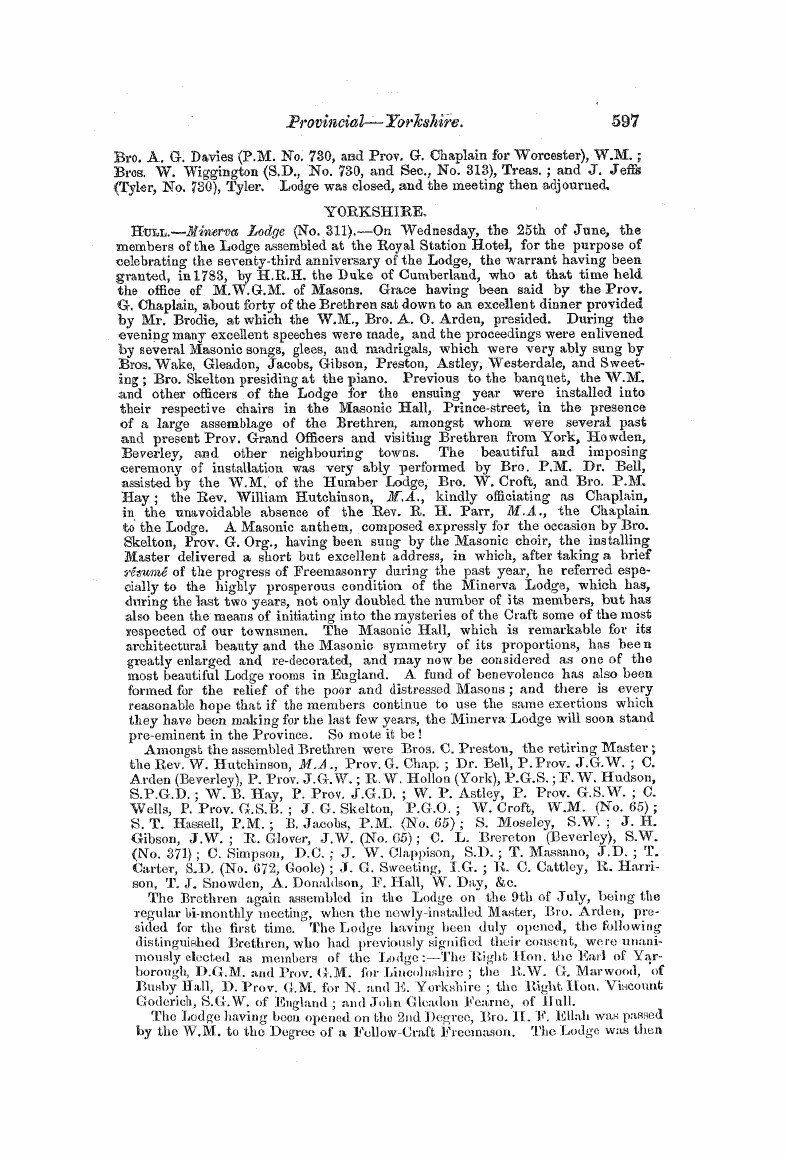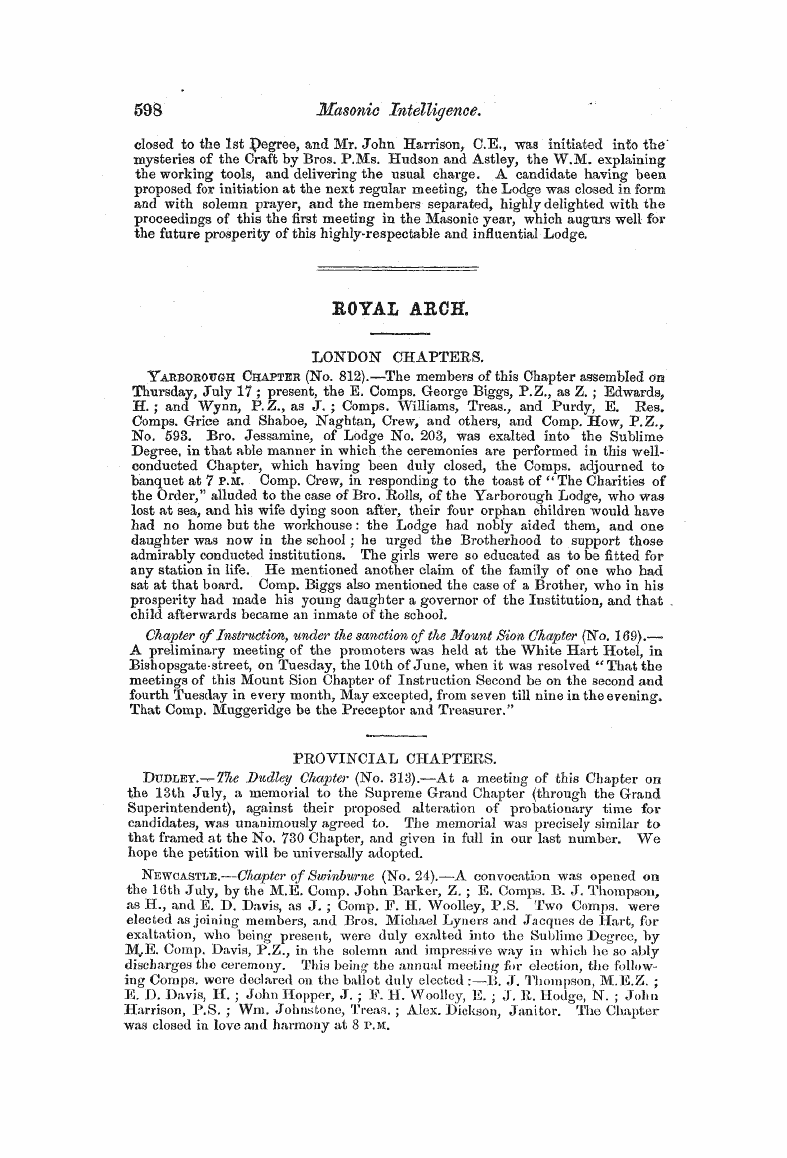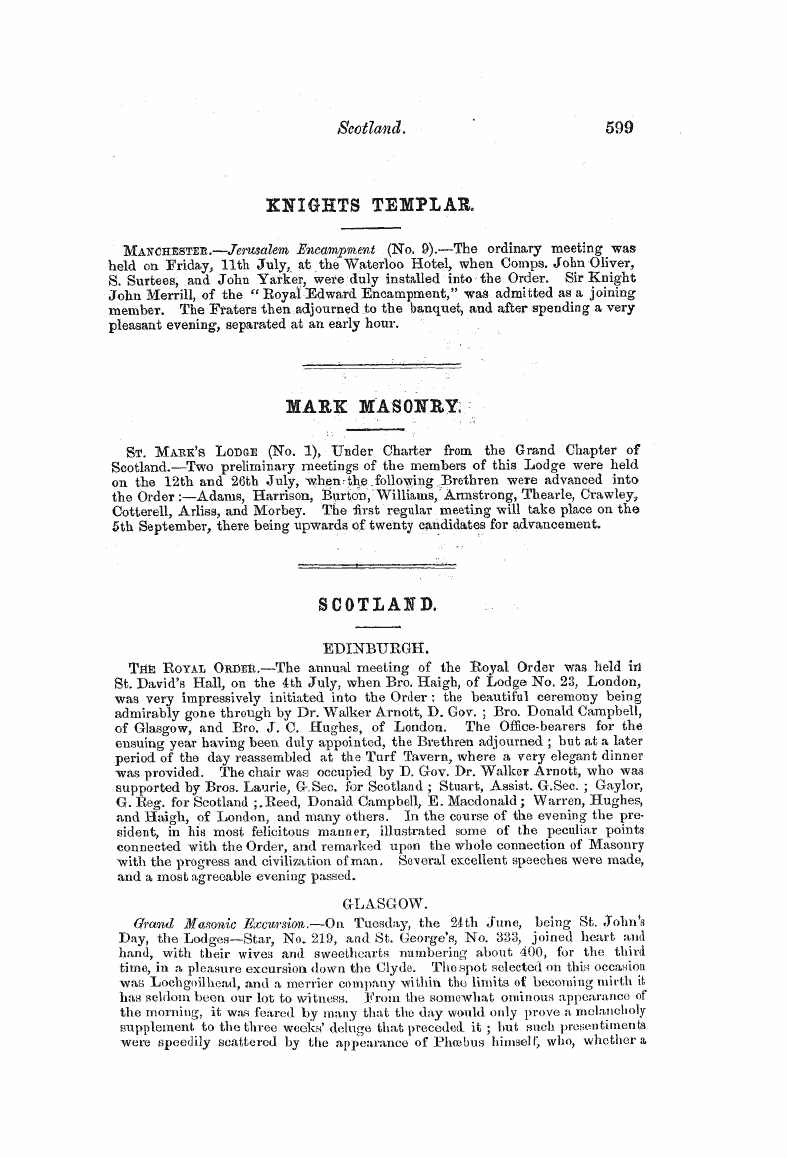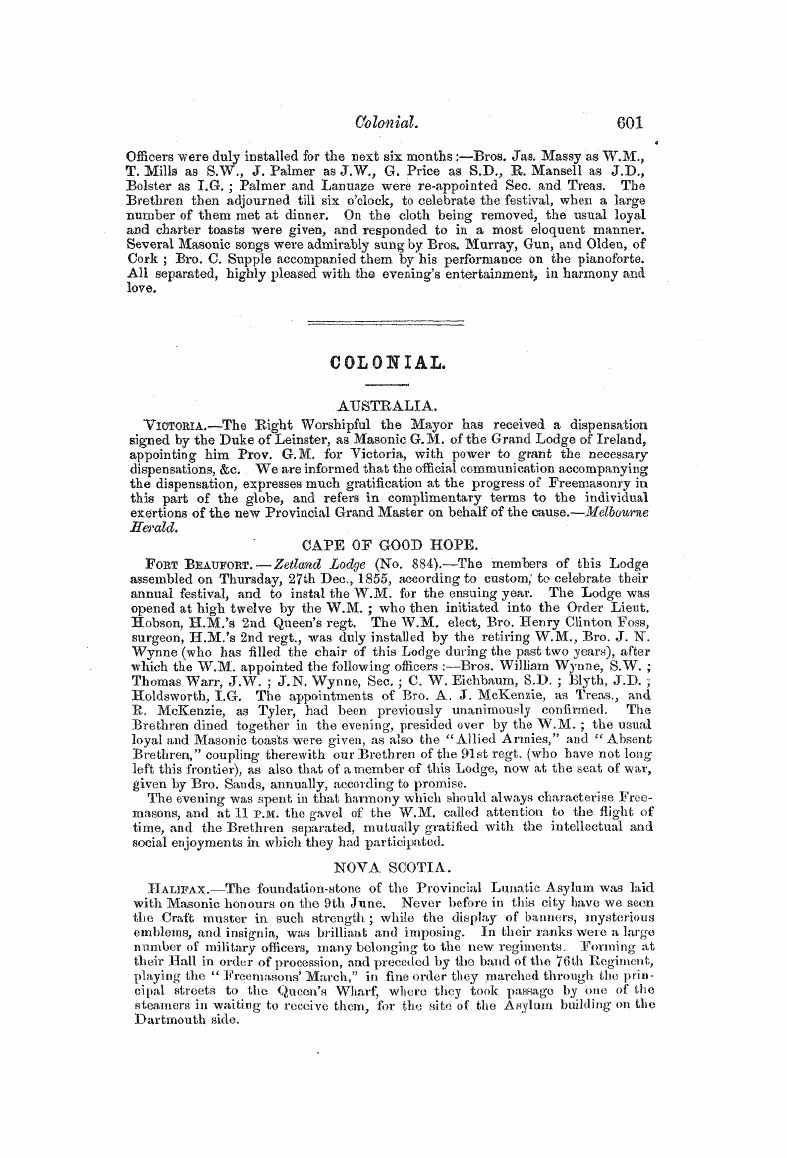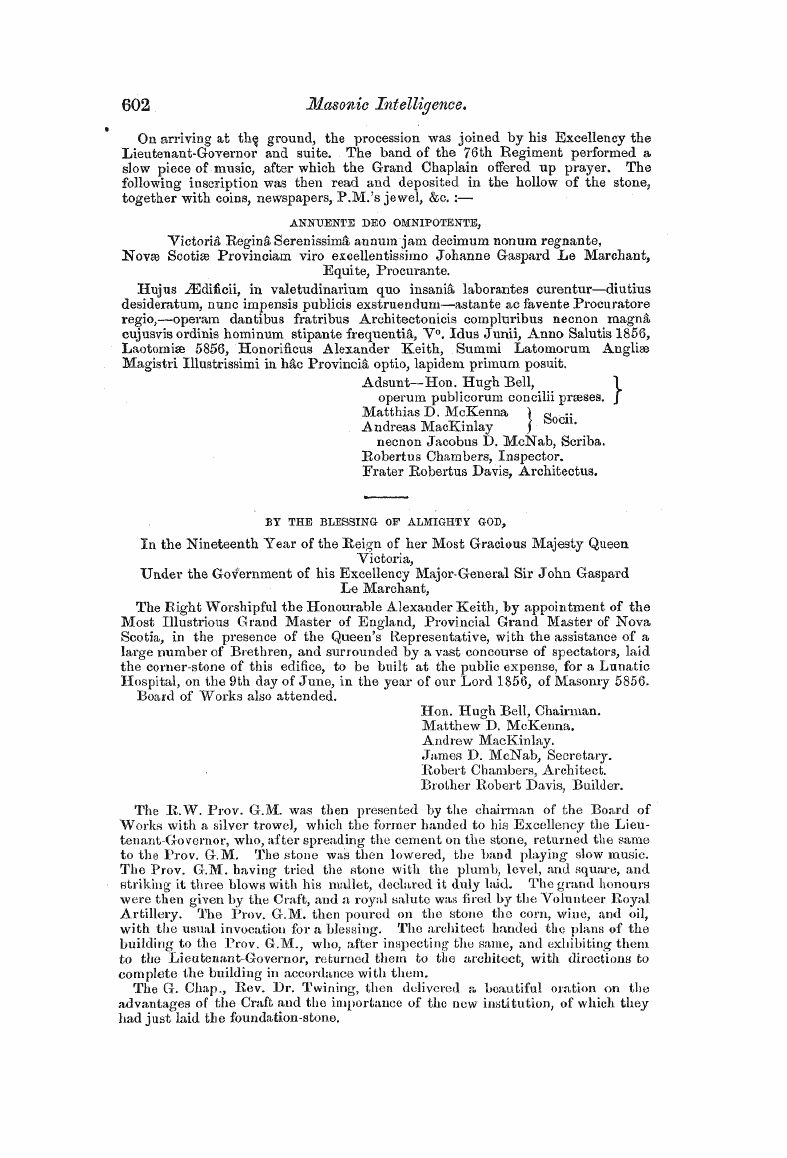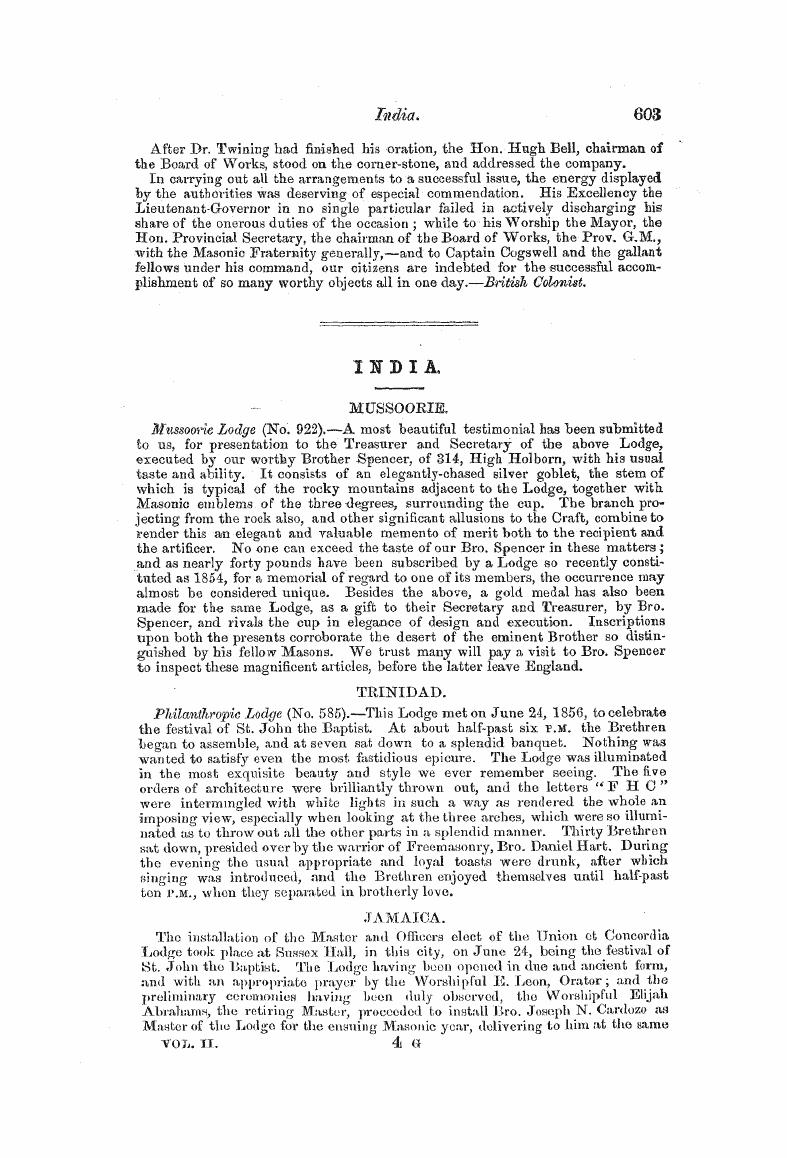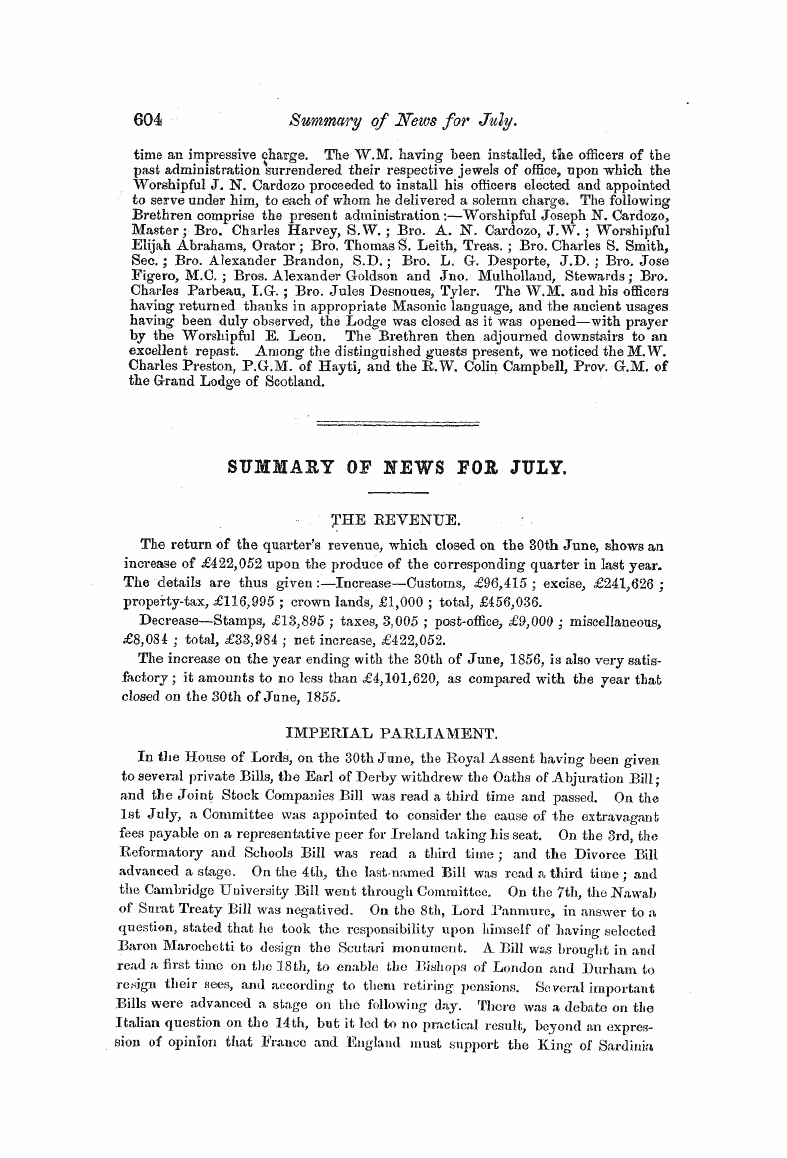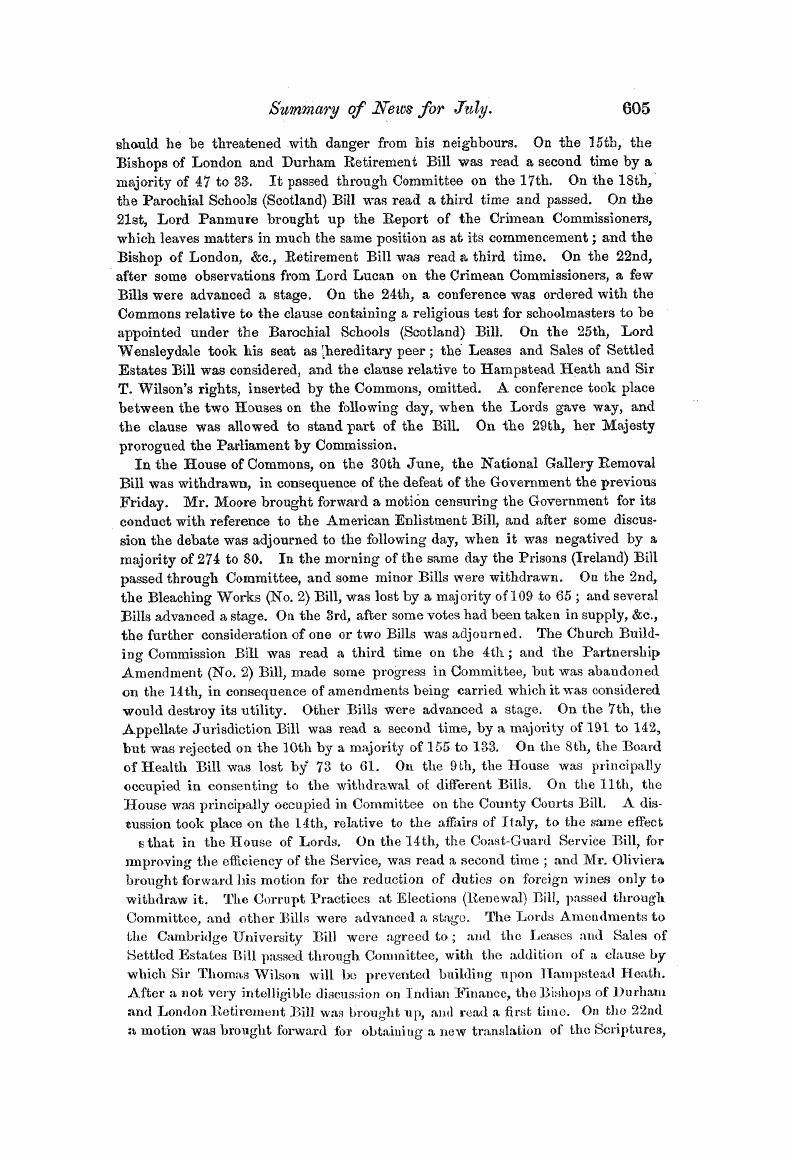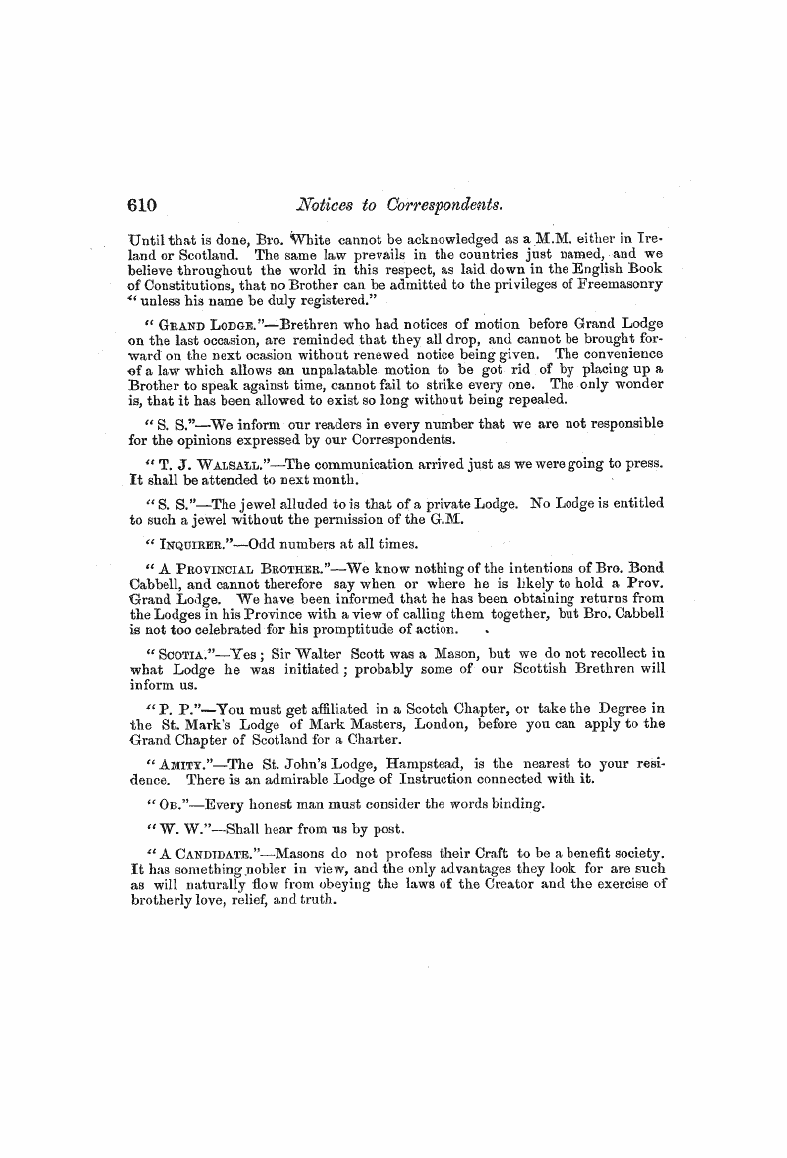-
Articles/Ads
Article ON THE MYSTERIES OF THE EARLY AGES AS CO... ← Page 4 of 6 →
Note: This text has been automatically extracted via Optical Character Recognition (OCR) software.
On The Mysteries Of The Early Ages As Co...
remove it when any person was imprisoned o > r released , it is not of that weight to be alone a sufficient guard of the prisoner , and therefore on the top stone or uppermost of the four first mentioned , lies the seventh , which is a vast stone , that with much , force was removed towards the north end , that with its weight it might fasten , and as it were clasp the door-stone .
" In Glamorganshire [ p . 619 ] , in the centre of a circle of stones , there is a cell or hut , as seen in several places of Wales , called Kist-vaen , about six feet in length by four feet wide . In Brecknockshire [ p . 594 ] is an ancient monument called St . Iltud ' s Hermitage , composed of four large stones , making an oblong square hut , open at the end , about eight feet long and four wide , and nearly the same height . In Carmarthenshire [ p . 627 ] is a kist-vaen , four and a-half feet in length and three feet broad . In Cardiganshire is a similar structure [ p . 647 ] , It is generally supposed they were places of burial , but I hstve not yet learned that ever bones or urns were found by digging under any of them . "
Besides the term " kist" being generally applied to these monuments , that which is stated to be in Cardiganshire was called Maen-y-prenvol or prennol , a word also signifying a chest . " The most remarkable structure of this nature is to be seen in Britanny , in the village of Esse * , about a league from Vitre" ( a town in the department of Ille et Yilaine ) , five posts to the eastward of Eennes , the capital of ancient
Britanny . It is formed of forty-two immense stones , presents the figure of an oblong square , and lies in the direction from S . E . to N . W . This monument is sixty feet long , twelve broad , and twelve in height above the ground . The entrance faces the S . E ., and the interior is divided into two parts . The first part is of an oblong form , twelve feet long , seven broad , and five high . Each side consists of four huge blocks , which support two other stones , forming the top or ceiling of the room . The other part is an irregular oblong figure , about thirty-three feet long , and ten broad at the entrance . One of the blocks has
been detached , and lies inside . The N . E . side diverges in a straight line from the S . W . wall to the extremity , which is closed by a single stone . The side on the S . W . is formed of twelve stones , six feet high , two of which project inwards . Another stone on the same side has an outward projection , and is independent of the wall ; here three stones form new divisions . The side to the N . E . is composed of ten stones , six feet high . This subterranean room is covered with six enormous blocks , and communicates with the other by a passage about four feet wide between the two stones , that form a sort of partition . The field in which
this monument stands was formerly a part of the forest of Theil . s-It is impossible to say what was the object of these structures , all of which are formed with a certain degree of uniformity , being of an oblong shape , although of different proportions , and entered either
by the north or south side ; it is therefore fair to conclude , that they were used for a religious purpose , it might have been initiation into the mysteries of the Druids . There is no reason to suppose that they were intended for sepulchral monuments , like the cromlechs . It may likewise belong to our subject to consider , how far the tenets of the Druids were connected with the worship of the serpent ,
which was observed throughout all pagan antiquity . This was particularly the case in Egypt , where this reptile was looked on as the symbol ' of medicine and of Apollo or / the sun . Herodotus says ( L . 2 , c . 74 ) : — / 11 Near Thebes were to be seen tame se / pents consecrated to Jupiter . They were harmless , and after death were buried in the temple of that god . " Elian speaks of a sacred dragon kept in Phrygia , in a wood dedicated to Diana ( Do Anim . L . xi . c . 22 and 17 ) ; and that there were
Note: This text has been automatically extracted via Optical Character Recognition (OCR) software.
On The Mysteries Of The Early Ages As Co...
remove it when any person was imprisoned o > r released , it is not of that weight to be alone a sufficient guard of the prisoner , and therefore on the top stone or uppermost of the four first mentioned , lies the seventh , which is a vast stone , that with much , force was removed towards the north end , that with its weight it might fasten , and as it were clasp the door-stone .
" In Glamorganshire [ p . 619 ] , in the centre of a circle of stones , there is a cell or hut , as seen in several places of Wales , called Kist-vaen , about six feet in length by four feet wide . In Brecknockshire [ p . 594 ] is an ancient monument called St . Iltud ' s Hermitage , composed of four large stones , making an oblong square hut , open at the end , about eight feet long and four wide , and nearly the same height . In Carmarthenshire [ p . 627 ] is a kist-vaen , four and a-half feet in length and three feet broad . In Cardiganshire is a similar structure [ p . 647 ] , It is generally supposed they were places of burial , but I hstve not yet learned that ever bones or urns were found by digging under any of them . "
Besides the term " kist" being generally applied to these monuments , that which is stated to be in Cardiganshire was called Maen-y-prenvol or prennol , a word also signifying a chest . " The most remarkable structure of this nature is to be seen in Britanny , in the village of Esse * , about a league from Vitre" ( a town in the department of Ille et Yilaine ) , five posts to the eastward of Eennes , the capital of ancient
Britanny . It is formed of forty-two immense stones , presents the figure of an oblong square , and lies in the direction from S . E . to N . W . This monument is sixty feet long , twelve broad , and twelve in height above the ground . The entrance faces the S . E ., and the interior is divided into two parts . The first part is of an oblong form , twelve feet long , seven broad , and five high . Each side consists of four huge blocks , which support two other stones , forming the top or ceiling of the room . The other part is an irregular oblong figure , about thirty-three feet long , and ten broad at the entrance . One of the blocks has
been detached , and lies inside . The N . E . side diverges in a straight line from the S . W . wall to the extremity , which is closed by a single stone . The side on the S . W . is formed of twelve stones , six feet high , two of which project inwards . Another stone on the same side has an outward projection , and is independent of the wall ; here three stones form new divisions . The side to the N . E . is composed of ten stones , six feet high . This subterranean room is covered with six enormous blocks , and communicates with the other by a passage about four feet wide between the two stones , that form a sort of partition . The field in which
this monument stands was formerly a part of the forest of Theil . s-It is impossible to say what was the object of these structures , all of which are formed with a certain degree of uniformity , being of an oblong shape , although of different proportions , and entered either
by the north or south side ; it is therefore fair to conclude , that they were used for a religious purpose , it might have been initiation into the mysteries of the Druids . There is no reason to suppose that they were intended for sepulchral monuments , like the cromlechs . It may likewise belong to our subject to consider , how far the tenets of the Druids were connected with the worship of the serpent ,
which was observed throughout all pagan antiquity . This was particularly the case in Egypt , where this reptile was looked on as the symbol ' of medicine and of Apollo or / the sun . Herodotus says ( L . 2 , c . 74 ) : — / 11 Near Thebes were to be seen tame se / pents consecrated to Jupiter . They were harmless , and after death were buried in the temple of that god . " Elian speaks of a sacred dragon kept in Phrygia , in a wood dedicated to Diana ( Do Anim . L . xi . c . 22 and 17 ) ; and that there were






















